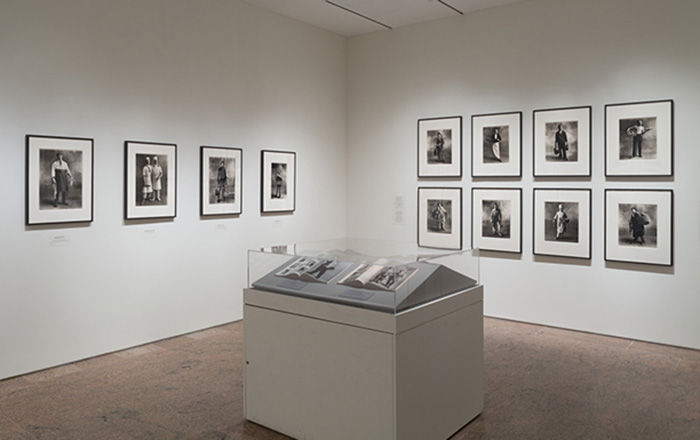[Maquette for a Unique Calendar containing Hofer's Early Photographs]
Evelyn Hofer British, born Germany
Not on view
This unique calendar maquette comprises forty-four vintage black-and-white photographs of New York City and Spain, trimmed and pasted into a store-bought spiral-bound planner. Although the calendar was never published, Hofer clearly took great care in constructing and sequencing the maquette, and the photographs themselves are exquisitely printed from black-and-white and color film negatives. The volume’s first half features photographs of New York City—views of skyscrapers and architectural details, street scenes, environmental portraits, mannequins, shop windows, and interior views (including the studio of artist Lee Bontecou)—many of which were published in Hofer’s book, New York Proclaimed (1965). The second half showcases photographs of Spain—Barcelona street scenes, rural landscapes, portraits of soldiers and shepherds—which were published in her previous book. The Presence of Spain (1964).
Born in Germany, Hofer began her career in Switzerland before moving to New York, where she worked briefly as a fashion photographer for Harper’s Bazaar, Vanity Fair, Vogue, and other publications. In the 1960s, she collaborated with several authors, including Mary McCarthy and V.S. Pritchett on a series of in-depth portraits of Florence, New York, Washington, D.C., London, Dublin, and Spain. In spite of her prolific career, Hofer’s elegant photographs, made with a large-format view camera, did not align with the dominant aesthetics of postwar American art photography. While contemporaries such as Robert Frank and Garry Winogrand cultivated an off-kilter spontaneity in their snapshot-like photographs, Hofer’s idiom was slower and more precise. Hilton Kramer, an art critic for New York Times and an admirer of her work, once called her “the most famous unknown photographer in America.” This maquette, with its sequence of pictures interspersed throughout the days of a year, prompts reflection on the relationship of still photography to the passage of time.
